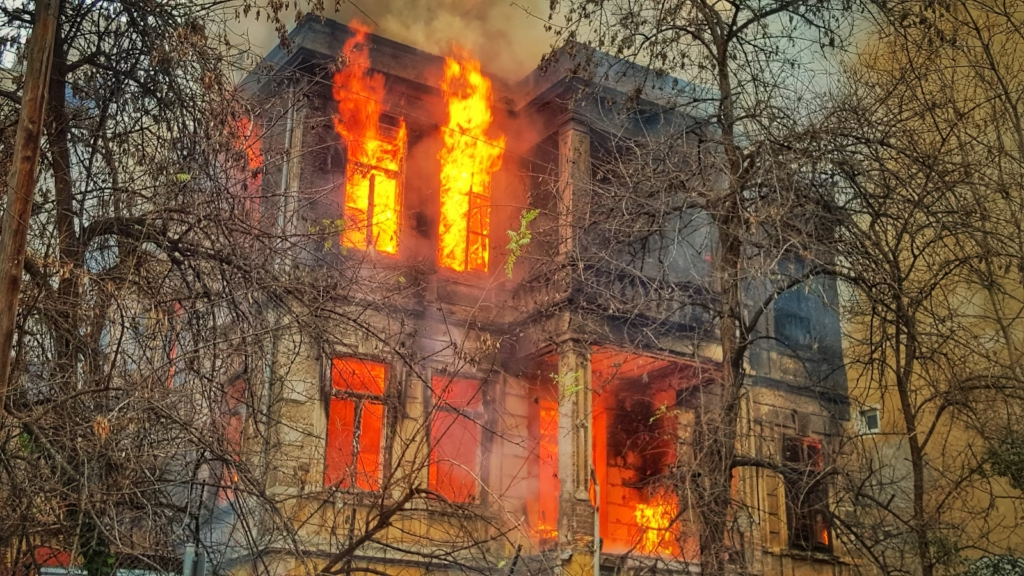Fire and elevated temperatures significantly impact the properties of Fiber Reinforced Polymers (FRPs), including their strength, stiffness, and Young’s modulus. These effects are critical considerations for the effective design and implementation of FRPs in various structural applications. Understanding how FRPs respond to fire and high temperatures is vital for developing appropriate fire protection strategies, as fire performance is as important as modulus of elasticity and yield stress in ensuring structural integrity. The maximum temperature that FRPs can endure is governed by their glass transition temperature and the onset of significant chemical decomposition.

This article delves into the behavior of FRPs under fire and high temperatures, strategies to improve their fire resistance, and practical considerations for their use in construction, particularly in reinforced concrete structures.
Fire Resistance and Protective Measures for FRPs
To improve the fire resistance of FRPs, fire retardant admixtures and gelcoats are commonly employed. Fire-retardant agents enhance the material’s ability to withstand fire exposure, while gelcoats protect against environmental degradation caused by these agents. Together, they ensure that FRPs maintain their structural properties and resist the adverse effects of fire.
FRPs are increasingly used in strengthening existing reinforced concrete structures, with externally bonded FRP plates and sheets being a widely recognized solution. However, concerns about their susceptibility to fire have limited their adoption in certain scenarios. Research and field experience demonstrate that appropriately designed and insulated FRP-reinforced structures can perform satisfactorily under fire conditions, mitigating these concerns.
Influence of High Temperature on FRPs
Strength and Stiffness
Exposure to high temperatures reduces the strength and stiffness of FRPs. Carbon Fiber Reinforced Polymers (CFRPs) exhibit some insensitivity to temperature changes up to 200°C, but their performance deteriorates beyond this threshold. Tensile strength and modulus of elasticity reductions vary across different FRP types:
- CFRP: 10% reduction.
- Glass FRP (GFRP): 20% reduction.
- Aramid FRP (AFRP): 30% reduction when exposed to service temperatures up to 60°C.
Bond Properties
The bond characteristics of FRPs decline significantly at temperatures exceeding the glass transition temperature. The bond strength depends heavily on the shear properties of the adhesive or matrix material, making it a crucial factor in determining the overall performance of FRPs under high temperatures.
Fire Hazards and Mitigation Strategies
Fire Spread, Smoke Generation, and Toxicity
Thermoset resins, commonly used in FRP composites, exhibit poor flame spread resistance and produce substantial quantities of smoke during combustion. These characteristics can pose safety risks. The application of coatings or barrier treatments has been shown to significantly improve fire spread resistance, reducing ignition risks and improving the overall fire safety of FRP materials.
Fire Resistance of FRP-Reinforced Concrete Members
The fire resistance of concrete members reinforced with FRPs is comparable to those reinforced with steel, provided the FRPs are adequately insulated. Greater cover thickness is required for FRP reinforcement to maintain acceptable temperatures. For externally bonded FRPs, thermal insulation is essential to ensure structural safety during fire exposure. Research shows that insulated, externally bonded concrete elements can withstand up to 1 hour of fire exposure before the FRPs begin to debond. With proper design, construction techniques, and fire-resistant materials, fire ratings of up to 4 hours have been achieved. In fire scenarios:
- Steel plates debond within 8 minutes.
- Carbon FRPs begin to burn slowly, with laminate cross-sections gradually reducing.
- Debonding of carbon FRPs from beams occurs after approximately 1 hour.
Conclusion
Fire and elevated temperatures pose significant challenges to the performance and durability of FRPs. These effects must be carefully considered during the design and construction phases to ensure structural safety. By integrating fire-resistant admixtures, protective coatings, and proper insulation, FRPs can achieve satisfactory performance in fire conditions. Continued advancements in material technology and construction practices will further enhance the resilience of FRP-reinforced structures, enabling their broader application across various engineering fields.
